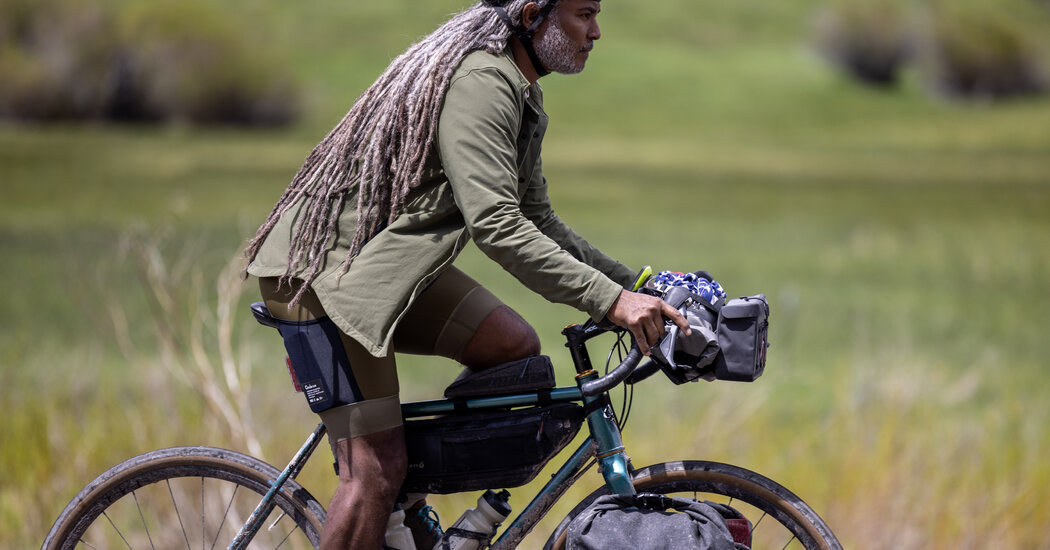In the summer of 1897, 20 Black U.S. Army infantrymen cycled 1,900 miles on fixed-gear, state-of-the-art bikes from Fort Missoula, Mont., to St. Louis. The Army ordered the grueling expedition to see whether soldiers could form a bicycle corps. Newspapers chronicled their progress as they pedaled 50 miles a day in mud and sand, through Montana’s snowy mountains and across Nebraska’s burning plains. The 41-day undertaking was a bit of lost military history until Erick Cedeño, a long-distance cyclist and a model based in Santa Monica, Calif., reenacted it in June of last year, on the expedition’s 125th anniversary.
“I’ve always been fascinated with history,” said Mr. Cedeño, 49, who has spent years gathering photos and documents related to the infantrymen and their journey. It was on a cycling trip from Miami to New York, about 10 years ago, when he decided he wanted to learn more about the history of long-distance cycling. His curiosity led him to the 25th Infantry Bicycle Corps.
“It was the first time that I saw a Black man from that time traveling by bike,” he said, referring to the historical photos of the soldiers on their bicycles.
The soldiers were part of the 25th Infantry Regiment, one of the African American units whose members were also known as Buffalo Soldiers. The 20 selected men, who were joined by a physician and a journalist on the expedition, were led by Lieutenant James Moss, who was fascinated by bikes, and proposed creating a bicycle corps. Lt. Moss, who was white, had graduated last in his class at West Point (the United States Military Academy), just three years before the expedition.
“Most of the people did not want to work west of the Mississippi,” Mr. Cedeño said. “So west of the Mississippi was left to the last in the class. And most of the time, west of the Mississippi meant that you had to work with African American troops.”
It was these troops who achieved a remarkable feat in both Black and cycling history — one that Mr. Cedeño has drawn new attention to by following in their bicycle tracks and telling their stories. I spoke to him about it in February, after he gave a talk about the journey at the Explorers’ Club, a members-only society in New York City.
The conversation has been edited for length and clarity.
You reenacted this journey. What were the highs and lows for you?
I started my expedition at 5:30 a.m. on June 14, 2022, precisely the hour and date the soldiers set off. It was 42 degrees…
Click Here to Read the Full Original Article at NYT > Travel…
